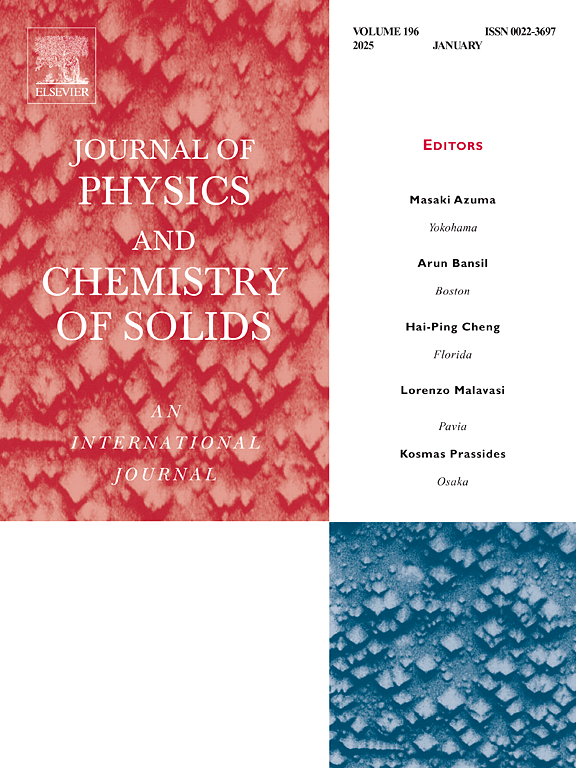用从头算方法揭示NaIrO3中金属-绝缘体跃迁:自旋-轨道耦合和强电子相关的作用
IF 4.9
3区 材料科学
Q2 CHEMISTRY, MULTIDISCIPLINARY
引用次数: 0
摘要
基于密度泛函理论(DFT)单独研究NaIrO3后钙钛矿化合物绝缘行为的失败尝试,我们利用自旋轨道耦合(SOC)和强电子相关(U)效应之间的相互作用,研究了该化合物的结构、弹性和电子性能。在这里,我们比较了弱Jahn-Teller畸变、过渡金属和配体位置的强电子相关以及Ir原子的自旋轨道效应的影响,以探索NaIrO3的绝缘行为。这种后钙钛矿化合物与交替层中八面体的倾斜有关,并获得了进行这项工作的从头计算参数。我们采用GGA+PBE近似与完全相对论伪势来执行计算,包括U和自旋轨道相互作用在量子浓缩咖啡包。从弹性性质来看,我们研究了这种化合物具有机械稳定性和延展性。该化合物在不同平面上也表现出各向异性。本文章由计算机程序翻译,如有差异,请以英文原文为准。
Unveiling the metal–insulator-transition in NaIrO3: The role of spin-orbit coupling and strong electron correlation using ab initio method
Motivated by the unsuccessful attempts using the density functional theory (DFT) alone to study the insulating behavior of NaIrO post-perovskite compound, employing the interplay between the spin–orbit coupling (SOC) and strong electron correlation (U) effect, we have studied the structural, elastic, and electronic properties of this compound. Here, we have compared the effects of weak Jahn-Teller distortion, strong electron correlation at the transition metal and ligand sites, as well as the spin–orbit effect of the Ir atom to explore the insulating behavior of NaIrO. This post-perovskite compound is associated with the tilting of octahedra in alternate layers, and the ab initio parameters are obtained to carry out this work. We employ the GGA+PBE approximation with full relativistic pseudopotentials to perform calculations including U and spin–orbit interactions within the Quantum Espresso package. From the elastic properties we have investigated that this compound is mechanically stable and ductile in nature. The compound also show anisotropic behavior at different planes.
求助全文
通过发布文献求助,成功后即可免费获取论文全文。
去求助
来源期刊
CiteScore
7.80
自引率
2.50%
发文量
605
审稿时长
40 days
期刊介绍:
The Journal of Physics and Chemistry of Solids is a well-established international medium for publication of archival research in condensed matter and materials sciences. Areas of interest broadly include experimental and theoretical research on electronic, magnetic, spectroscopic and structural properties as well as the statistical mechanics and thermodynamics of materials. The focus is on gaining physical and chemical insight into the properties and potential applications of condensed matter systems.
Within the broad scope of the journal, beyond regular contributions, the editors have identified submissions in the following areas of physics and chemistry of solids to be of special current interest to the journal:
Low-dimensional systems
Exotic states of quantum electron matter including topological phases
Energy conversion and storage
Interfaces, nanoparticles and catalysts.

 求助内容:
求助内容: 应助结果提醒方式:
应助结果提醒方式:


